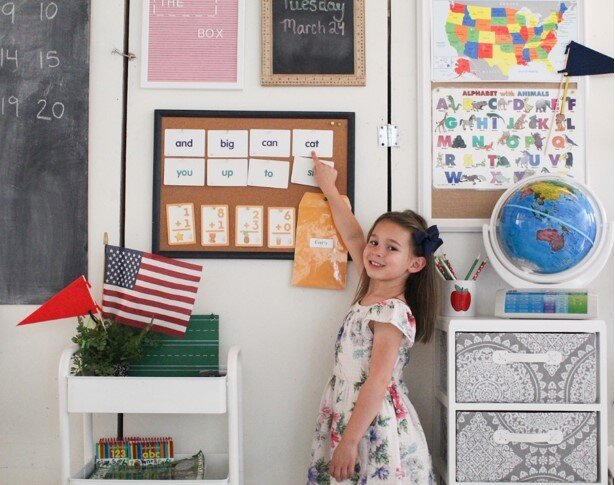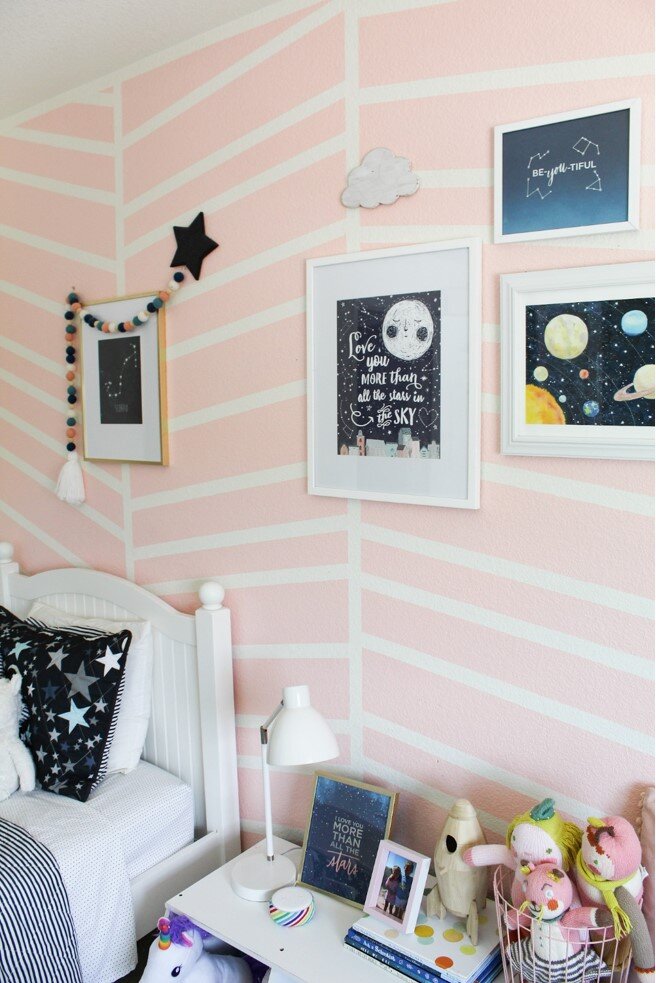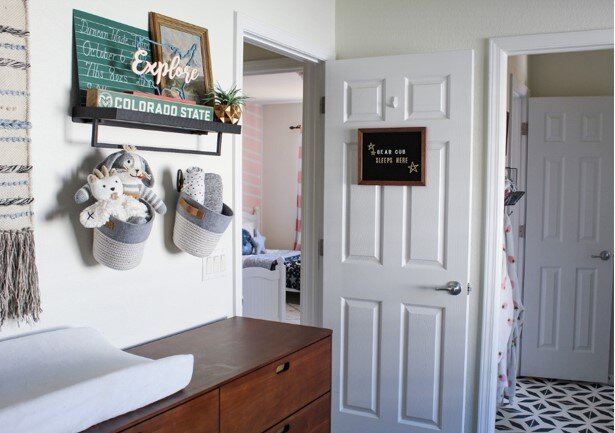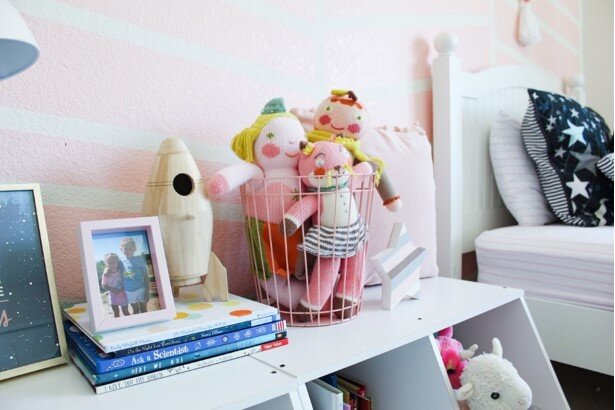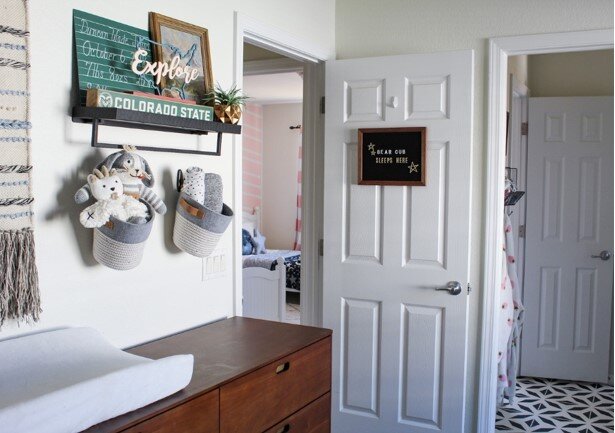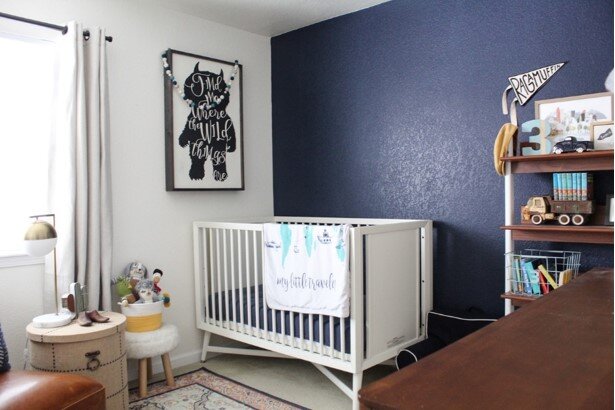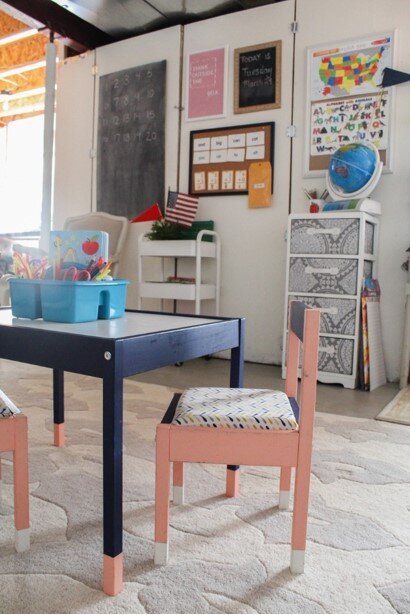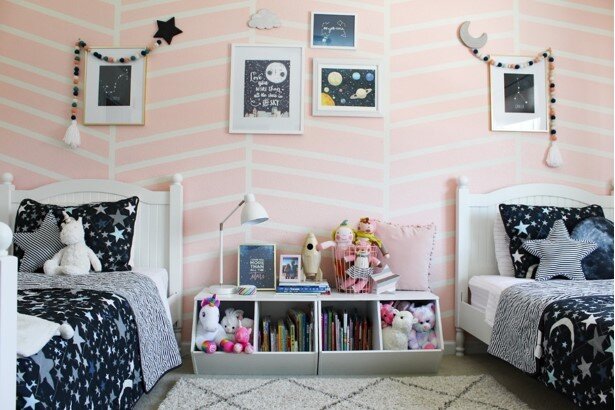An Interview with Amanda Johnston or Project Whim
I’m so excited to share with you all an interview I just did with Amanda who shares her amazing everyday mom stories on her blog Project Whim. If you’re designing a kid’s space or just looking to liven up your do a DIY redesign of your kid’s bedroom, read on for some great tips! Plus, you’ll get to hear all about how she designed her daughters’ galaxy themed bedroom, her son’s Scandinavian themed bedroom, and
Tell me a little bit about yourself and what you do.
My name is Aakansha Jain, and I am an aspiring medical student who also helps my family run Freedom Montessori School, of which we are also owners. My mom is the director at the school which means she goes in every day and oversees all administrative work as well as manages the teachers. I mostly help with social media promotions and help clean and organize the school.
What is the theory behind the Montessori Method?
The Montessori Method dictates that there be a carefully curated environment in which a child can simultaneously learn and play at their own pace. Basically, Montessori encourages each child to learn topics at their own pace. Each material or toy within this environment reaffirms an academic lesson that child has had before.
What does a typical day look like at a Montessori school?
At our school, children generally start off their mornings with “play time”. The teacher will take out one or two types of toys that encourages collaborative play and allows the child to wake up and be more prepared for their lessons during the day. During this time, children who have brought breakfast with them also have the chance to eat it. Once all the children have arrived, or 9am hits, the teachers will hold circle time. At this time, the children will have split into their respective class based on their age (infant, pre-primary, and primary). Circle time generally consists of reviewing the date and time, discussing the weather outside, important events that occur during that month (i.e. holidays or celebrations) and a broad overview of they learned the previous day. After circle time, the children start their “work time”. At this time, each child will have worksheets curated for where they are in their lessons. The children also have the choice to choose which subject they want to focus on that day within options the teacher gives. For example, a child might be asked if he or she wants to work on math or geography that day, and depending on the answer, the teacher will give that child a worksheet to do. These worksheets always require the use of Montessori materials such as marbles for counting in math, or large geographic map puzzles used in geography lessons. After work time, children have their lunch and their naps. For the older children, as our school also offers kindergarten, they have the option to read or complete worksheets that they couldn’t before. In the afternoon, children will have a little more time for work and depending on the day, may go outside to the playground or on an adventure walk. Towards the end of the day, when children begin to leave, play time resumes and most classes are combined (infants are kept separate for safety reasons).
How is Montessori different from other teaching methods?
The biggest difference in Montessori methods is the autonomy children have in their academics. By giving them choices, I have seen that children have a greater inclination to complete their work and are excited to do it. At the same time, the progress is recorded and carefully monitored by teachers making sure that the child does improve and grow upon what they do each day. This also ensures that no child feels like they are behind in the lesson since they are going at their own pace.
What 3 things can mommas do at home to model the Montessori method?
The biggest and, in my opinion the easiest, thing a parent can do to encourage Montessori method is give the child options on what they want to do. This helps them build their independence while you still get to nudge them in the direction you want.
Encourage practical life skills whenever you can! Having your child “help” you while you cook by asking them to measure, setting/clearing the table, pouring water into a jug. All of these tiny lessons not only give the child a sense of responsibility and the importance of the task, but also helps support the fine skills required in academics, such as a steady hand and strength for handwriting, or math skills.
Let them be bored! Without introducing a screen, see how your child uses their imagination to take up their time. A lot of times, they will unknowingly incorporate many of the lessons they learned at school or with you into their play, helping to reinforce it continuously over time.
How do teaching methods at home and at school impact children?
It’s been shown that different teaching methods have different effects on children. From my own experience, being approached in a way that doesn’t work with my learning style make me not want to continue learning that topic. And this is the trend I’ve also seen with other children. A lot of times, parents are hung up on skills that they think their child needs to have and push them even though the child isn’t ready. This could really intimidate the child and make them feel as if they are behind, which only makes them reluctant to try and learn it in the future. I think the best teaching method is one in which the child’s parent and teacher confer with each other and support during their time with the child.
What top 3 toys or activities do you recommend parents have at home?
You don’t have to go too crazy with materials! I would say biggest thing that would create a Montessori environment at home is maybe creating a corner for the child. In this, you can incorporate a small bookshelf, a table and chair, and some practical life materials, like a duster. One piece of material which I think kids love to use and benefits them the most are sandpaper letters. These come as uppercase, lowercase, or cursive and are used as tracing material. Children use their pointer and middle finger together and trace the letter in the way they would right it. Due to the different texture, children love to use this material, and it has shown great improvements in their handwriting. (There is also a number version of these available). In terms of mathematics, I would highly suggest number rods. These red and blue rods are used to match a number 1-10 to the respective rod. Each rod increases in height by one unit and has an alternative pattern of red & blue. This allows kids to not only do their math problems, but also create different color patterns.
What keeps you inspired in teaching with the Montessori method?
My mom has been an educator for my entire life, and for years before we owned Freedom Montessori School, taught at a different Montessori, so I grew up with it. I took a child psychology class in college which discussed the benefits of Montessori education and to read about the psychological effects the Montessori methods have on children made me believe that we were in the right field. I think the most appealing aspect is the autonomy children are given in their schoolwork. I know that I love having autonomy in my life and the classes I tried the hardest in growing up were the ones I got the choice to take.
What tips do you have for designing shared spaces for two kids?
Storage, storage, storage! With two beds taking up most of the space in the girl’s room, I had to get creative on where to store all their clothes and favorite items. My first rule was no toys allowed in the room except for all their books and their stuffed animals. I found THESE stackable storage bins and put 2 side by side to create a long nightstand/storage solution for between the beds. They each have a bin with 2 compartments that they put all stuffed animals in and all their books. I love how I can then use the top of it for their lamp and some fun décor items. At one time we made it into a little bench where they could sit and read. This storage solution is great because it’s simple and allows them to clean up on their own. For clothes they share the closet and I use hanging canvas storage bins like THESE to store folded items like pajamas, shorts, undies, swimsuits and t shirts. This give us organization like a dresser but without having a big bulky piece of furniture. I labeled the bins so the girls can easily find what they need.
Let’s talk about your son’s bedroom. Tell us how you went about designing it.
I wanted a minimalist, Scandinavian, mid century vibe for Duncan’s nursery. I really did not want the room to be “babyish”. I wanted it to be more of a grown up boy theme and something he could grow into as he got older. There are a lot of Mid Century features like his dresser/changing table, the bookshelf and the large faux leather chair. These are all items we will be able to use for a very long time. I used a lot of storage solutions for him too. I hung 2 small woven baskets about the changing table to hold diaper changing essentials and burp cloths so they would be easily accessible while changing a little one and not having to dig through a drawer. His bookshelf is one of my favorite pieces. It holds some old Hardy Boy Books in a vintage dump truck, a minimalist sketch of the City of Denver, a galvanized “D” for his name and the bottom shelf is for books. I kept the walls really simple by painting one accent wall a solid navy blue. And then hung 1 large piece of art (The Wild Things Sign) and a “Ragamuffin” Pennant Flag. I love his large faux leather chair. It’s the perfect spot for all the kids to pile up and read a bedtime story.
What tips do you have for mommas who love Scandinavian themed design?
Keep it simple. Clean lines and simple color scheme help create that Scandinavian look. I love incorporating natural wood in the design for texture and to give off that Scandi Vibe.
I love a good play space — how did you design yours? With everyone working / playing from home, can you suggest any tips for learn and play environments?
Since I mentioned before that the kids don’t really keep toys in their room, I keep all their toys in their play room in the basement. I use lots of storage bins to hold all the littler toys. I have it set up in sections for easy play and independent clean up. All the kitchen and food items are in a corner, all the color books and colors are by the table and chairs, all the babies toys are in his own section. With the recent remote learning going on at home I turned part of their play area into a “school” for the girls. A designated spot for us to do school work has really helped keep them excited about school and helped me stay organized in teaching the lessons from their teachers. I hung ABC charts and site words in this area and also put their globe and large chalk board to make it look like a classroom. I also had to add an American Flag so we could say the pledge of allegiance for the start of our school time each day. The girls really get a kick out of that. Take a peek into our DIY “classroom” set up on my Blog Post, Remote Learning Set Up.
Now for the big one! Toy storage and organization is always a big headache for moms. How do you go about keeping everything tidy?
My biggest tip for storage for kids is to separate the toys and store them in the room you use them in. For example, in the kids rooms we store all their books and stuffed animals because that is where we read and cuddle. In the living room is where we store all our games and puzzles. That is usually where we hang out as a family and play games. All other toys are stored in the playroom. I have bins to help separate toys, so barbies go in their own bin, cars go in another, blocks go in another. This does not always stay organized when the kids clean up themselves, but it’s an easy system that we can reorganize when we need to. For more organization ideas for kids you can check out my blog post on Organization Ideas for Kids.
You’ve written about adding seasonal decor to your kid’s spaces, with the holidays not too far away, what tips do you have for seasonal decor?
Yes, I love decorating the kid’s rooms for the holidays. I like to keep it simple so it’s not overwhelming when it’s time to take it down. I like to add little touches to their spaces to make it more festive. A little Christmas Tree, an advent calendar, switching out some of their books for holiday themed books. One of my favorite tips is to swap out any faux plants for a seasonal one, little winter tree/winter berries. Swap out their blankets for a more holiday themed one to make it feel different and magical. And of course, twinkle lights. We add twinkle lights all throughout the house around Christmas and its so magical!
What advice do you have for moms doing DIY kids spaces on a budget?
My biggest tip is Keep it Simple. A kid’s space does not need a lot of stuff. Make items multi-purpose like the storage bins in my girls room. I’m a big fan of using paint to transform a room because it’s inexpensive and the possibilities are endless. Whether you paint the wall a solid color, a mural or a fun modern design, even add DIY Ship Lap it makes a huge impact to a space. Get crafty and make your own décor. I loved the way the pom garlands looked in kids spaces so I bought my own felt pom poms and made them myself. Sew your own pillows or blankets or make your own yarn wall hanging. Its more sentimental knowing you made it yourself and can save some money too.
Anything else you’d like to share?
Thanks for letting me share my story and some of my favorite tips for designing and organizing kids spaces. For more inspiration and ideas please visit my blog Project Whim and for an inside peek into our daily lives head over to Instagram and let’s be friends!
xoxo, Amanda Johnston, Project Whim | Adding WHIM to the Everyday
There you have it! Some amazing tips for DIY kid’s rooms from designer, blogger, and mom of 3, Amanda Johnston! Check out her awesome blog for more great design tips and kid’s activities. And if you’re designing your own galaxy or space themed bedroom, be sure to check out this Solar System art print set by yours truly!






